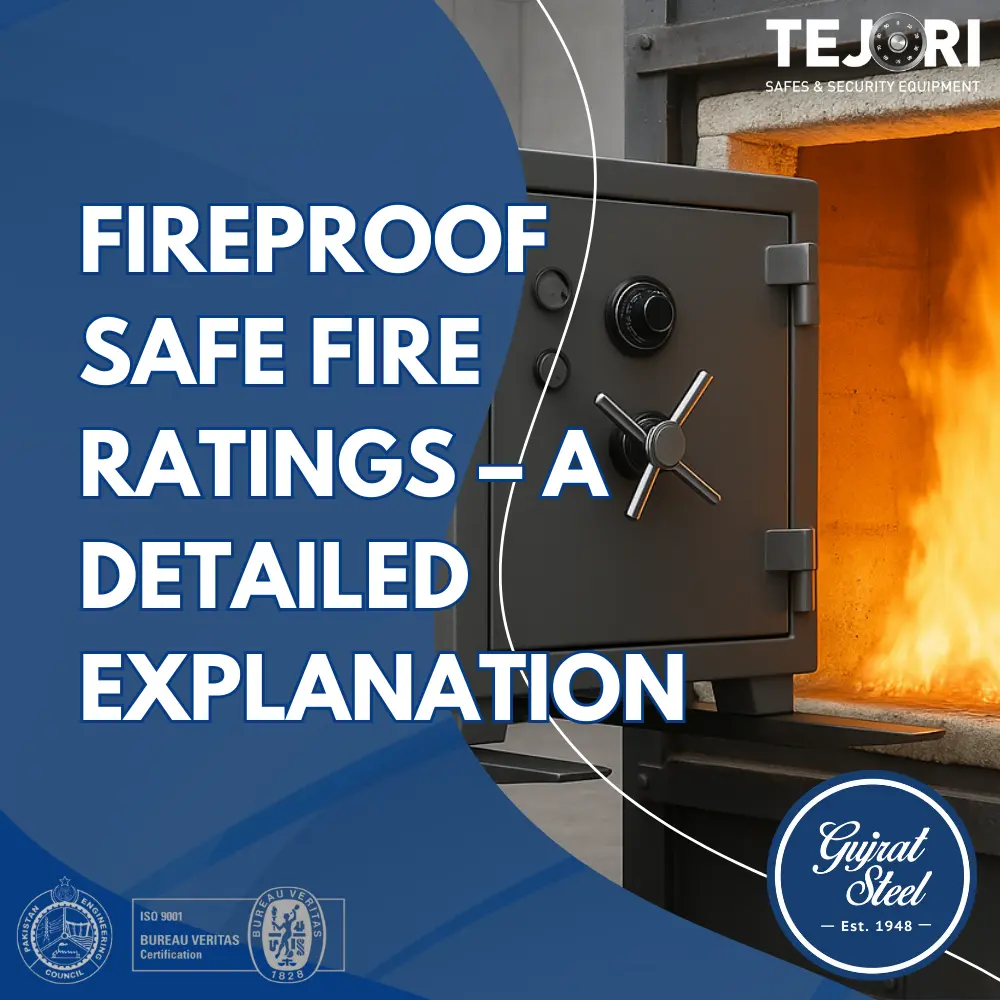Fireproof safe ratings tell you how long a safe can resist fire heat while keeping inside temperatures low enough to protect contents (like paper below 350°F). While no safe is truly “fireproof,” properly rated safes do work effectively up to their tested limits.
Key Takeaways
- Ratings Matter: Look for independent ratings (like UL or ETL) specifying time (e.g., 1 hour, 2 hours) and temperature resistance.
- Internal Temp is Crucial: Safes protect contents by keeping the inside temperature below critical points (e.g., ~350°F / 177°C for paper).
- How They Work: Thick insulation and special door seals slow heat transfer and block flames/smoke.
- They A properly rated safe generally protects contents effectively for its specified duration and temperature. A 1 hour fireproof safe should protect paper for an hour in a standard test fire.
- Not Invincible: Ratings have limits. Extreme heat, longer fires, structural collapse, or water damage from firefighting can still affect contents.
- Choose Wisely: Select a rating based on what you’re storing (paper vs. digital media) and potential fire risks/response times in your area.
Table of Contents
Introduction
Thinking about a house fire? Scary stuff. Losing papers, photos, maybe digital files… it’s awful. That’s why people get fireproof safes, right? But then you see labels like “UL 1 Hour” or “ETL Rated.” What’s that even mean? How hot does it get inside one of those things? And really, do they actually work if the worst happens? Figuring out those fire ratings – how they test ’em, what they really protect – is super important before you lock your important stuff inside. Let’s try to make sense of these ratings and see how much you can trust these safes.
What’s a Fire Rating Mean, Anyway? Reading the Labels
Okay, first up: companies rarely say their safes are totally “fireproof.” Nothing really is. They usually say “fire resistant.” And they back that up with ratings from independent testers. You know, companies whose whole job is testing stuff to see if it’s safe and does what it claims.
Two big names you’ll see a lot are:
- UL (Underwriters Laboratories): These guys are known worldwide for safety testing. A UL rating on a safe carries weight.
- ETL (Intertek): Another big, respected independent lab that tests and certifies products, including fire safes.
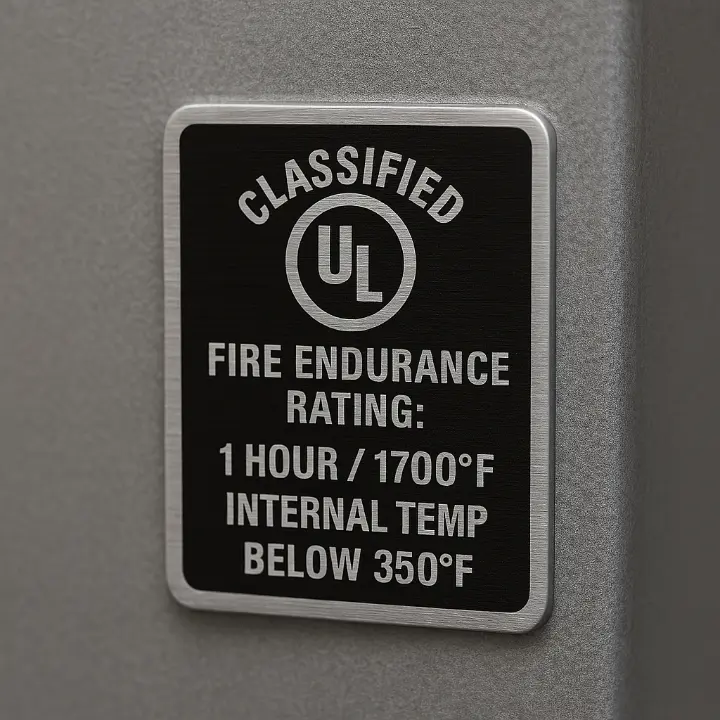
So, what do these ratings tell you? Usually, three key things about the test fire:
- How Long: Did the safe survive for 30 minutes? 1 hour? 2 hours? Really good ones might even go 3 hours or 4 hours, but those are less common.
- How Hot Outside: They cook the safe in a furnace! The rating tells you how hot that furnace got (often really hot, like 1700°F or more).
- How Cool Inside: This is maybe the most important bit. The rating promises the temperature inside the safe didn’t go above a certain point during that whole test time. That’s what saves your stuff.
The All-Important Internal Temperature Limit
Different items get damaged by heat at different temperatures. Fire ratings account for this:
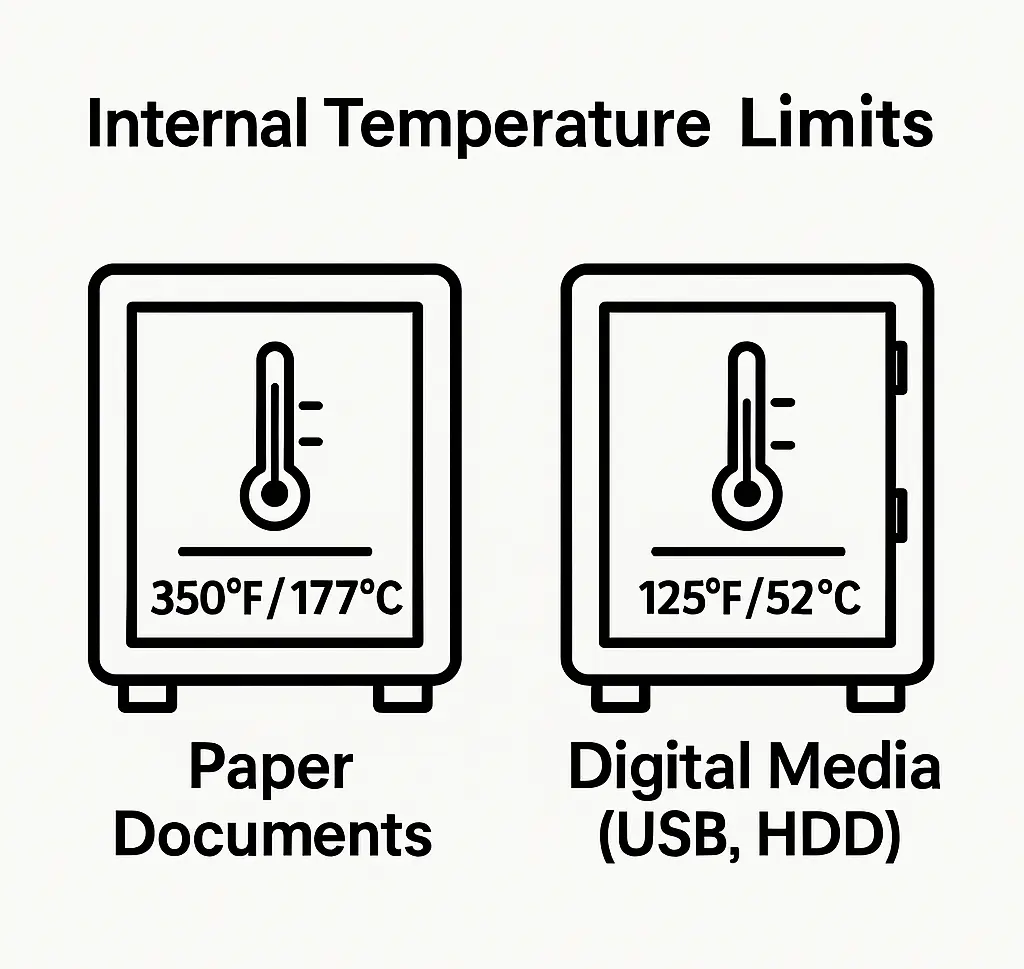
- For Paper Documents: The most common rating ensures the internal temperature stays below 350°F (177°C). Paper chars and becomes unusable around 405°F (207°C), so this provides a safety margin. Look for ratings like “UL Class 350 – 1 Hour”.
- For Digital Media: CDs, DVDs, USB drives, hard drives, memory cards are much more sensitive to heat and humidity. They need much lower internal temperatures. Look for ratings specifying below 125°F (52°C) and often controlled humidity levels (e.g., below 80-85%). Ratings might look like “ETL Verified 1 Hour for Digital Media” or “UL Class 125 – 1 Hour/2 Hour”.
- For Film/Tapes: Older magnetic tapes or photographic film have their own sensitivity, often needing protection below 150°F (66°C) and controlled humidity.
Crucial Point: A safe rated only for paper (Class 350) will NOT protect digital media! The inside gets way too hot. You need a specific media-rated safe for electronics.
How Are These Ratings Determined? The Fire Test
Getting a UL or ETL fire rating isn’t easy. It involves intense testing:
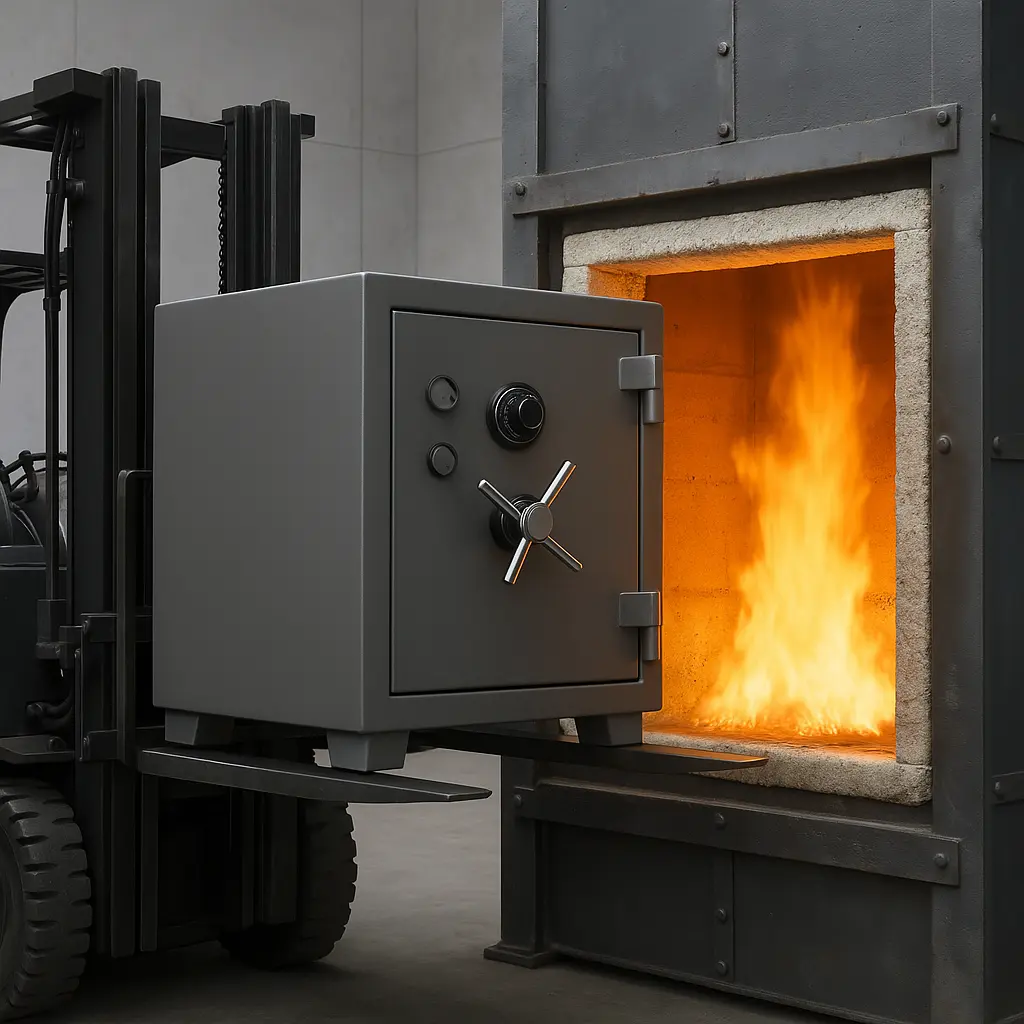
- Furnace Test: The safe is placed inside a special furnace. The temperature inside the furnace is rapidly increased according to a standard time-temperature curve, simulating a typical house fire (e.g., reaching 1700°F / 927°C for a 1-hour test).
- Internal Monitoring: Thermocouples (heat sensors) inside the safe constantly measure the internal temperature.
- Duration: The safe “bakes” in the furnace for the specified rating duration (e.g., 60 minutes for a 1-hour rating). Throughout this time, the internal temperature must not exceed the specified limit (e.g., 350°F for paper).
- Cool Down: This is also important. After the furnace is turned off, the safe remains inside as the furnace cools down gradually. Heat stored in the safe’s walls continues to transfer inwards, and the internal temperature can actually rise for a while after the external heat source is removed. The rating ensures the internal limit isn’t breached during this critical cool-down phase either.
- (Optional) Impact Test: Some safes also undergo an impact test (part of certain UL ratings like the Fire & Impact rating). After being heated, the safe might be hoisted up (e.g., 30 feet) and dropped onto rubble, then reheated to simulate a floor collapse during a fire. This checks structural integrity under extreme stress.
- (Optional) Explosion Hazard Test: The safe is heated rapidly to see if trapped moisture inside the insulation builds up steam pressure and causes the safe to rupture violently.
Only safes that successfully pass all parts of the required test earn the certification label.
How Do Fireproof Safes Actually Work?
It’s not magic, it’s materials science! Fire resistant safes work primarily through two mechanisms:
Insulation:
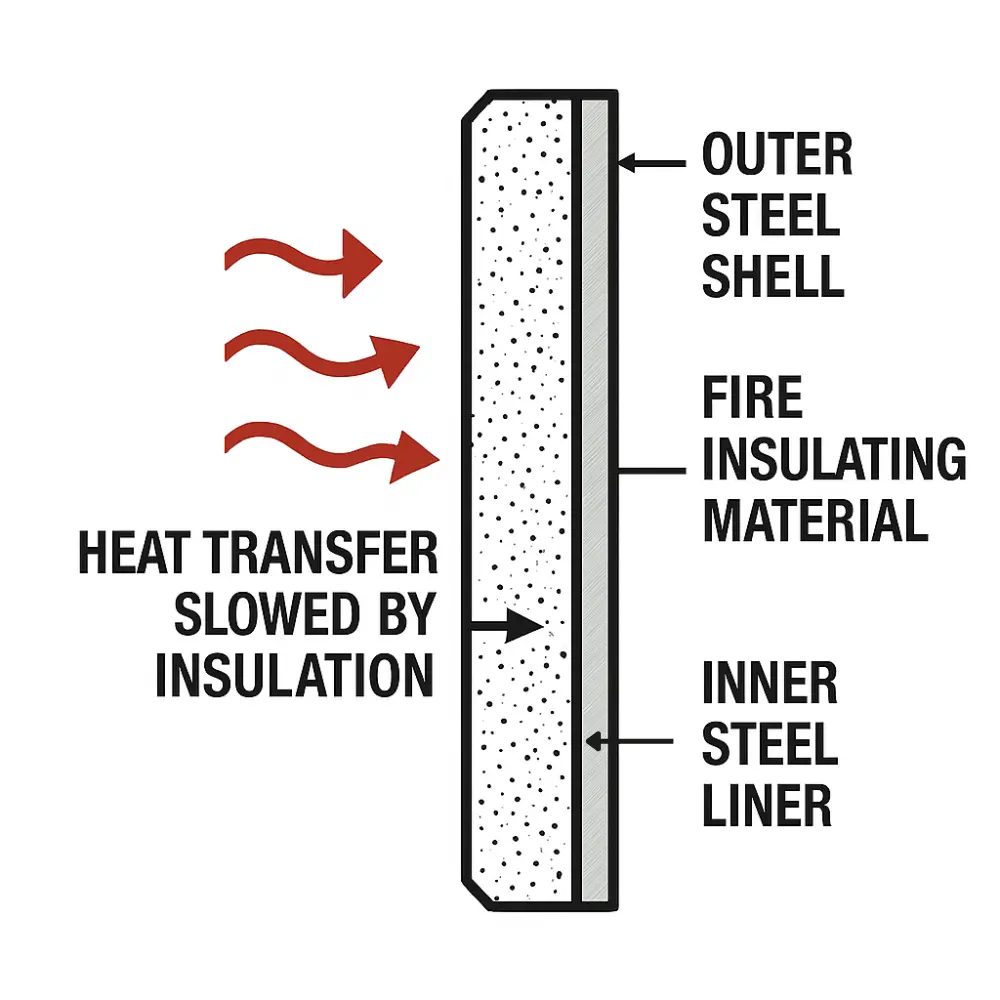
Think thick walls. But not just regular wall stuff. The safe’s walls and door are packed with special insulating material. Its whole job is to slow down heat getting from the fiery outside to the cool inside. It might be a special mix involving stuff like gypsum (like drywall, but maybe denser), maybe some concrete-like stuff, or other materials designed to soak up heat. Sometimes these materials even release steam when they get super hot, which uses up even more heat energy. More insulation usually means it can resist heat for longer.
Door Seals:
The gap between the safe door and the body is a potential weak point for heat, smoke, and even water to enter. Fire resistant safes use special seals around the door frame.
Intumescent Seals:

These are common. When exposed to high heat, these seals dramatically expand (like foam), filling the gap tightly to block flames and hot gases.
Cold Smoke Seals:
Some also have seals that block smoke even before the intumescent seal activates.
The combination of thick, heat-absorbing insulation and expanding door seals creates a protective environment inside, keeping the temperature low for the rated duration.
So, Do They Really Work in a Real Fire?
This is the million-dollar question. Based on the rigorous testing and how they are constructed, the answer is generally YES, fire resistant safes do work very effectively, provided that:
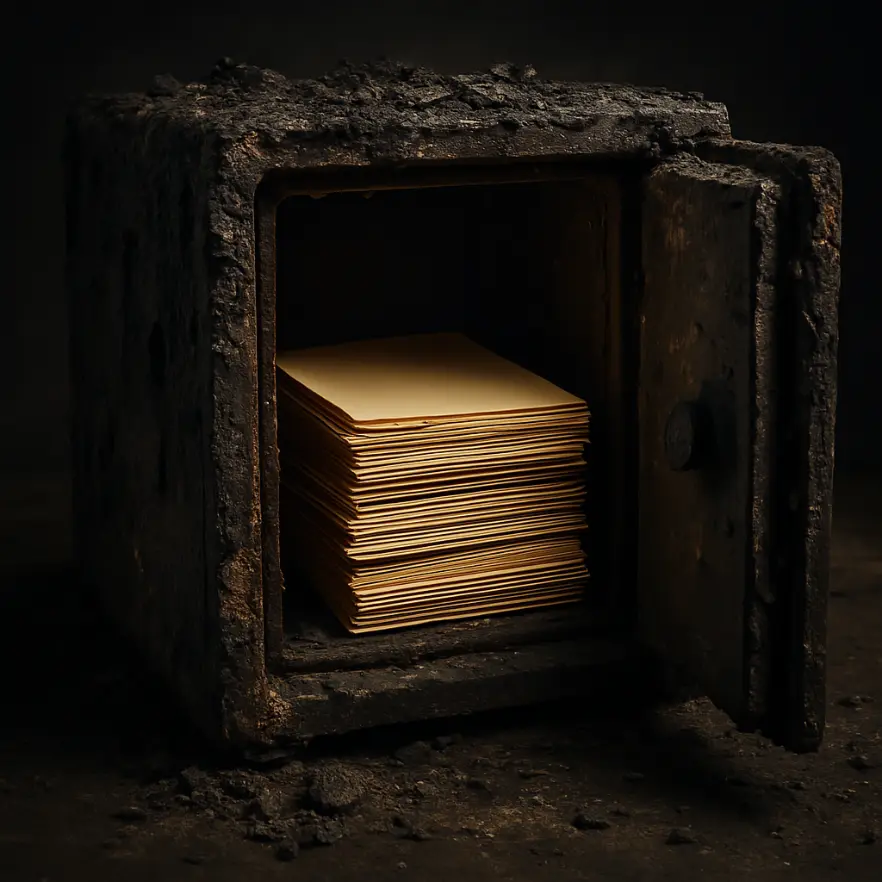
- The Fire Doesn’t Exceed the Rating: A 1 hour fireproof safe is designed to protect against a standard test fire for one hour. If your house fire burns much hotter or significantly longer than the test conditions (which is possible in severe fires or with certain accelerants), the safe could eventually fail. A 2 hour fireproof safe naturally offers a greater margin of safety.
- The Safe Remains Structurally Intact: If the building collapses during the fire and the safe falls several stories or is crushed by heavy debris (and isn’t specifically impact-rated), the structure could be compromised, potentially breaking seals or insulation.
- It Was Closed Properly: Seems obvious, but the seals only work if the door is fully closed and bolted!
- The Internal Temperature Limit is Respected: Again, putting digital media in a paper-rated safe means the safe might survive the fire structurally, but the contents will likely be destroyed by heat.
Countless stories exist of homeowners recovering perfectly preserved documents and valuables from quality fire resistant safes after devastating house fires. The independent ratings provide a reliable benchmark of performance under specific, challenging conditions.
Important Limitations: What Fire Ratings Don’t Cover
It’s crucial to understand what a fire rating doesn’t guarantee:
Water Damage:
Fire ratings typically don’t include protection against water from fire hoses or sprinkler systems (unless the safe also has a separate ETL water resistance rating). Water can seep through seals (especially after they’ve expanded from heat) and damage contents, particularly paper and electronics. Sticking things in waterproof bags or containers inside the safe can give you an extra safety net against water damage.
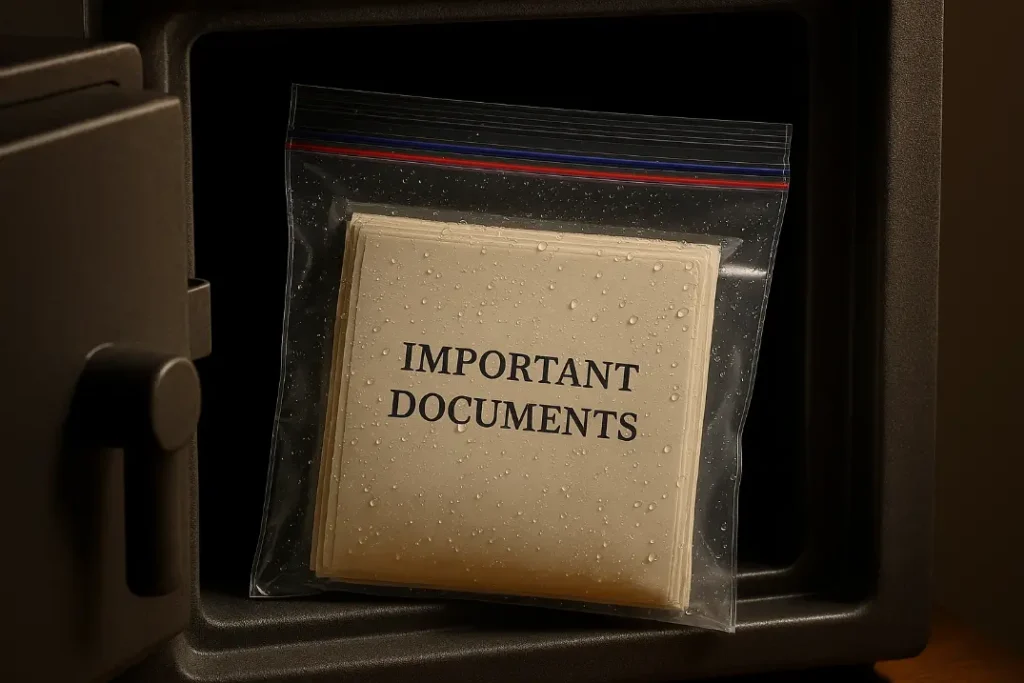
Steam Damage:
Here’s another thing. When that insulation inside the walls gets really hot, any tiny bit of moisture trapped in it turns to steam. Even if the air temperature stays below the paper limit, really steamy air inside could still damage fragile things like old photos or some types of digital tapes. (Good media safes often try to control this humidity too).
Burglary Protection:
Fire resistance and burglary resistance are completely different things! A safe with a great fire rating might have thin steel walls and a simple lock, making it easy to pry open. Look for separate burglary ratings (like UL RSC – Residential Security Container) if you need protection against theft too. Often, higher burglary ratings mean thicker steel, which indirectly helps fire resistance, but they are distinct tests.
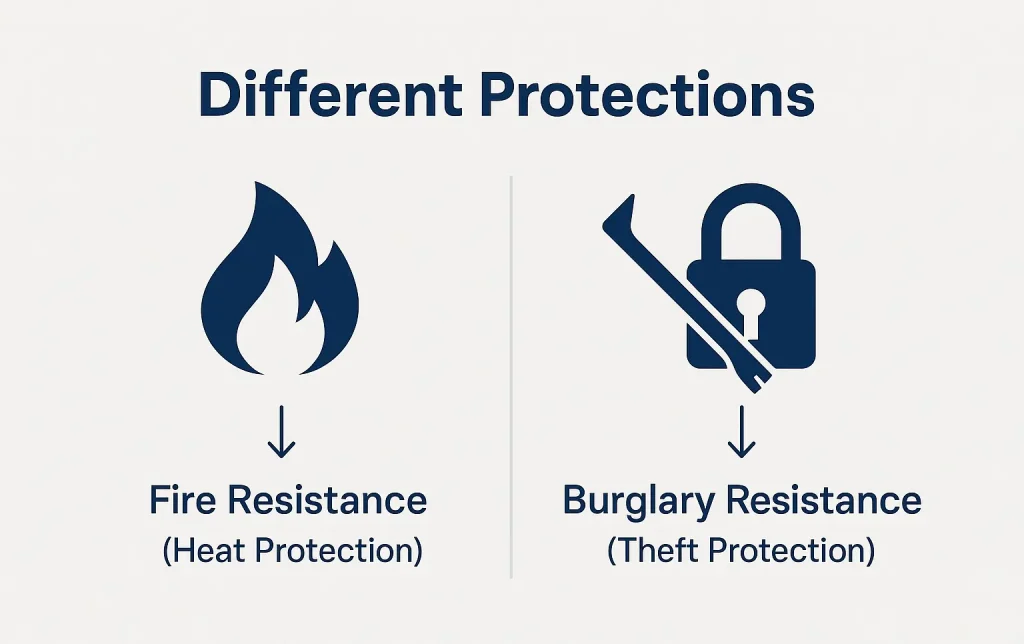
Flash Fires / Extreme Heat Spikes:
Standard tests involve a gradual temperature rise. A sudden, extremely intense flash fire might overwhelm the insulation faster than the rated time suggests.
Choosing the Right Fire Rating: What Do You Need?
Picking the right safe means matching the rating to your situation:
What Are You Storing?
Paper only? You need at least a Class 350 rating. Digital media? MUST be a Class 125 or specifically ETL verified media safe. Storing both? Use a media-rated safe, or put media inside a separate small media case inside your paper-rated safe.
How Long Does Protection Need to Last?
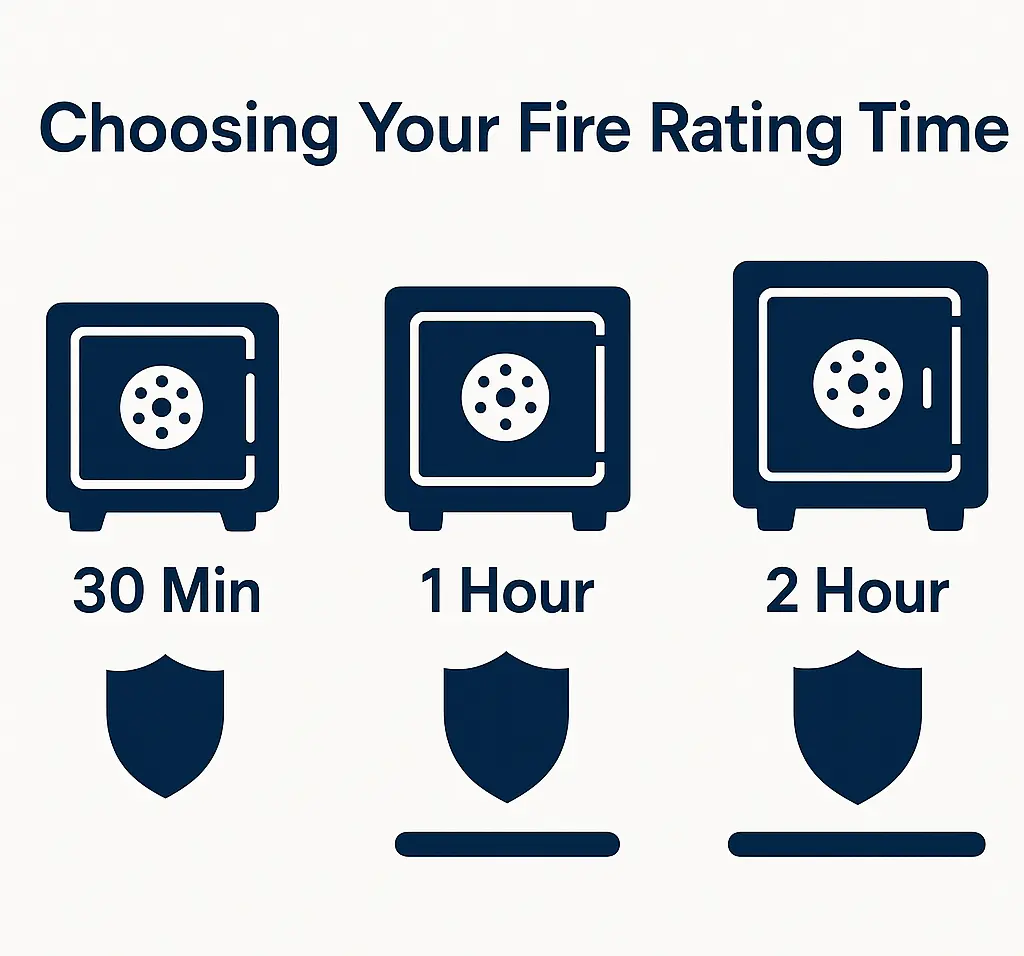
30 Minutes: Might be okay in an urban area with very fast fire department response times, maybe for less critical documents. Generally considered minimum protection.
1 Hour Fireproof Safe: A very common and good balance for typical home use. Provides reasonable protection assuming average fire department response.
2 Hour Fireproof Safe (or longer): Offers significantly more protection. Recommended if you live in a rural area with longer response times, store highly valuable/irreplaceable items, or want extra peace of mind. 3 hour or 4 hour fireproof safe models offer maximum protection but come at a higher cost and weight.
Where Will the Safe Be?
A safe on an upper floor is more likely to experience a fall if the floor collapses – an impact rating might be wise. A safe in a basement might be more prone to water damage after a fire.
Conclusion: A Valuable Layer of Defense
So, do fireproof safes work? Yes, when chosen correctly and understanding their certified limits, independently rated fire resistant safes provide reliable and often crucial protection for your important documents and valuables against the devastating heat of a fire. They function by using specialized insulation and door seals to keep internal temperatures survivably low for a specific duration.
While no safe is truly invincible against all possible fire scenarios or water damage, investing in a quality safe with an appropriate UL or ETL fire rating significantly increases the chances your irreplaceable items will survive a disaster. It’s about buying time – time for the fire to be extinguished before the damaging heat gets inside. Choose your rating wisely based on what you need to protect!



